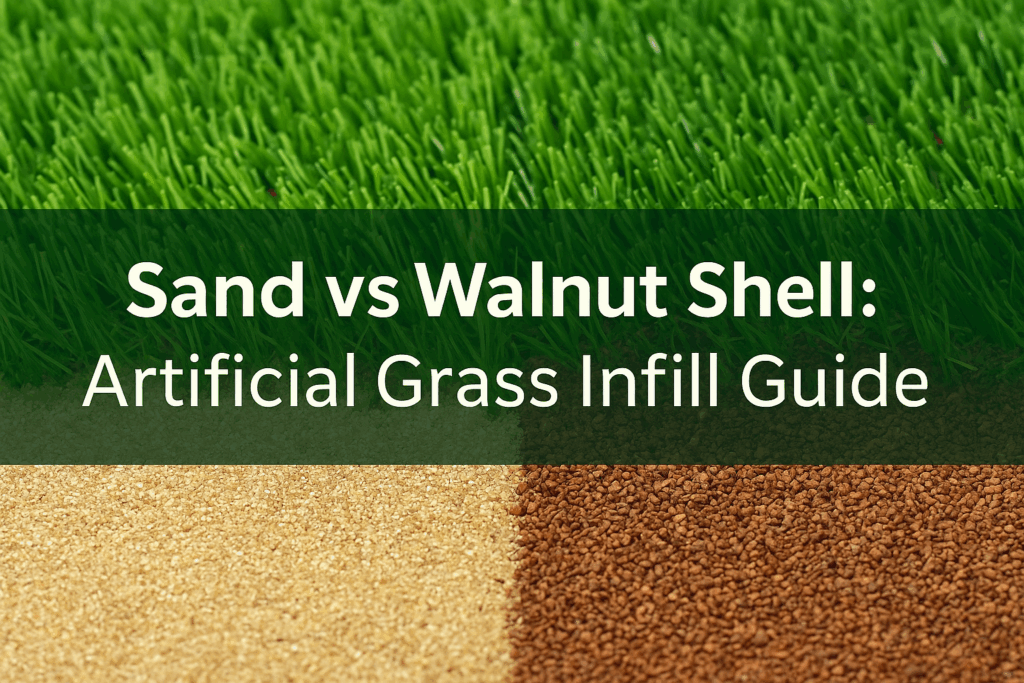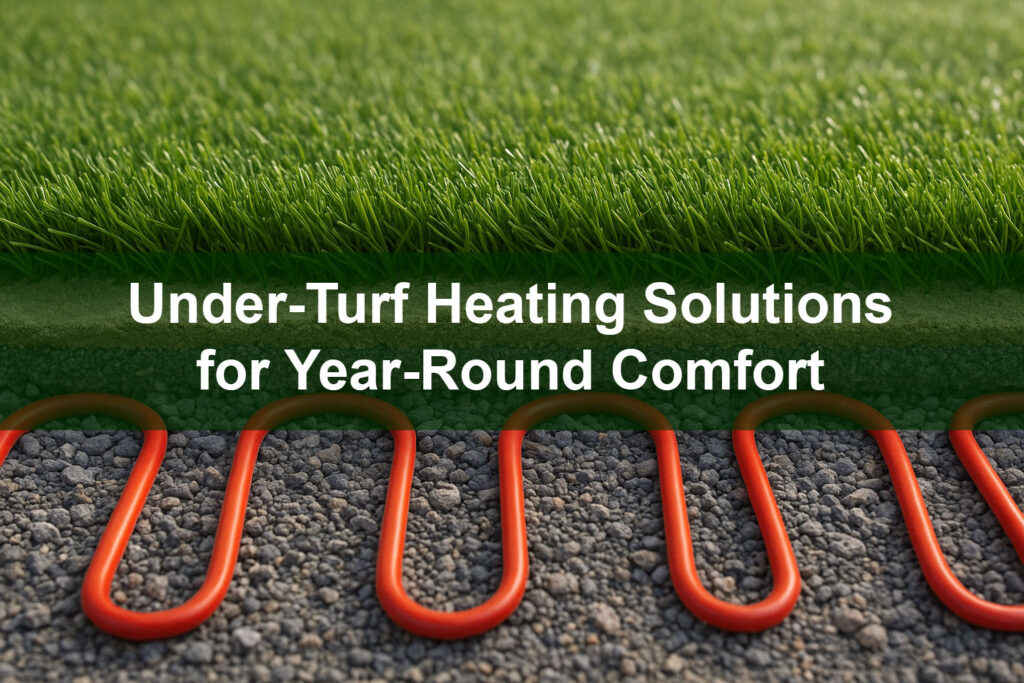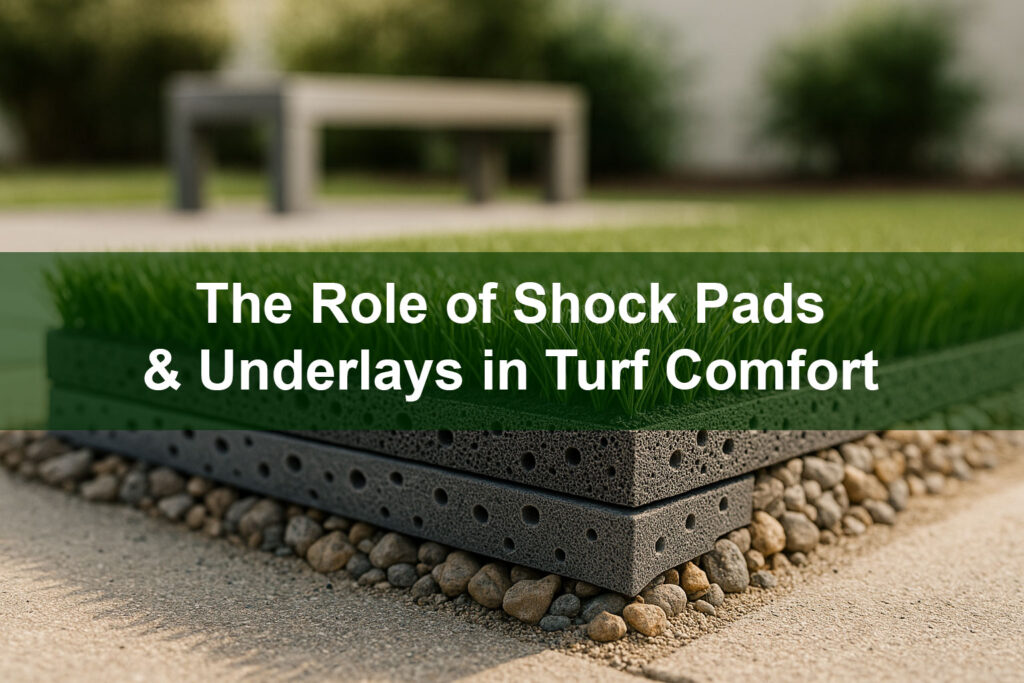Comparing Infill Options: Sand vs Walnut Shell for Artificial Grass
Choosing the right infill for your artificial grass can make a significant difference in performance, appearance, and maintenance. Sand and walnut shell are two of the most popular infill options—and each has unique benefits and trade-offs. In this guide, we’ll dive into the characteristics of both materials, helping you decide which infill best suits your lawn, play area, or pet zone.
Whether you’re installing synthetic turf for a residential backyard, commercial landscape, or pet-friendly play area, understanding infill properties is crucial for long-term satisfaction. Let’s explore how sand and walnut shell compare in terms of stability, drainage, environmental impact, and cost.
What You’ll Learn in This Guide:
- Key functions of infill and why it matters
- Pros & cons of sand infill
- Pros & cons of walnut shell infill
- Environmental, safety, and pet-friendly considerations
- Cost, maintenance, and installation tips
The Role of Infill in Artificial Grass
Infill material sits between synthetic grass blades, providing structural support, regulating drainage, and enhancing shock absorption. Without infill, the turf can shift, mat down, or fail to replicate the firm feel of natural grass. Infill also helps weigh the turf down, preventing wind uplift and improving durability under foot traffic.
Key functions of infill include:
- Blade support – Keeps fibers upright for a realistic look.
- Shock absorption – Provides cushioning for sports, pets, and children.
- Weight – Prevents movement and wind damage.
- Drainage – Allows water to flow through while preventing pooling.
- Temperature control – Certain infills can moderate surface heat.
Sand Infill — Pros & Cons
Silica sand is the most common infill choice for artificial turf. It’s naturally abundant, cost-effective, and offers excellent stability. Here’s a closer look at what sand infill brings to the table.
Advantages of Sand Infill
- Stability and weight: Provides solid anchoring for turf, preventing shifting in high-traffic or windy areas.
- Cost-effective: Silica sand is one of the cheapest infill options, making it budget-friendly for large installations.
- Drainage-friendly: Properly graded sand promotes fast water percolation, reducing puddling.
- Non-toxic: Inert and safe for most applications when clean and free from dust.
Drawbacks of Sand Infill
- Heat retention: Sand can absorb and radiate heat, making the surface hotter in direct sun.
- Compaction: Over time, sand can compact and harden, requiring periodic brushing or top-up.
- Pet tracking: Fine sand can stick to paws and be tracked indoors unless properly rinsed.
Walnut Shell Infill — Pros & Cons
Walnut shell infill, derived from crushed walnut hulls, is a biodegradable, renewable option favored for its cooling properties and aesthetics. It’s particularly popular in pet areas and residential lawns.
Advantages of Walnut Shell Infill
- Cooler surface: Organic shells absorb less heat, keeping turf cooler on hot days.
- Natural look: Dark brown color blends seamlessly with turf backing for realistic appearance.
- Biodegradable: Eco-friendly and compostable, returning nutrients to the soil beneath.
- Pet-friendly: Soft on paws and effective at odor absorption when cleaned regularly.
Drawbacks of Walnut Shell Infill
- Cost: Generally more expensive than sand due to processing and supply factors.
- Durability: May break down over time, requiring periodic replenishment.
- Mildew risk: In wet climates, organic infill can promote mold or mildew if not maintained properly.
Environmental & Safety Considerations
Both infill types are non-toxic when processed correctly, but there are environmental nuances:
- Sand: Inert and free from organic decomposition; mining impact is a factor.
- Walnut Shell: Renewable and compostable; risk of allergen residue if shells aren’t thoroughly washed.
- Regulatory compliance: Always choose certified infill that meets local environmental and safety standards.
Cost, Maintenance & Longevity
Maintenance routines and costs differ by infill. Sand typically requires brushing every 6–12 months, while walnut shells may need refreshing annually. Over a 10-year turf lifespan, budget for minor infill top-ups and occasional deep cleaning—learn more in our maintenance guide.
Installation Tips for Optimal Performance
Regardless of infill, proper installation is key:
- Base preparation: Compact and level a crushed rock sub-base with appropriate slope for drainage.
- Turf securing: Use galvanized stakes or adhesive along edges and seams.
- Infill distribution: Spread infill evenly, brush fibers to allow infill to settle between blades.
- Final grooming: Use a power broom to lift fibers and ensure infill is well-integrated.
Conclusion
Both sand and walnut shell infill have distinct advantages. Choose sand for stability, cost efficiency, and simple maintenance. Opt for walnut shell if you prioritize cooler surface temperatures, aesthetics, and eco-friendliness. Evaluate your climate, budget, and usage to make the best choice.
Ready to select the perfect infill for your project? Explore our recommended infill options on the products page or book a consultation with our installation experts.
Find Your Ideal Infill Today
Contact Buy-Grass to get tailored advice on sand vs walnut shell for your artificial lawn.







